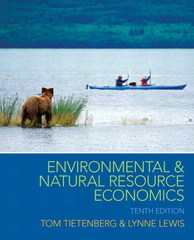How do the authors ensure that the changes in labour market outcomes between February and April 2020 are caused by the pandemic and not by other seasonal changes?
To be unemployed in the LFS, a person needs to report having been temporarily laid off, having a job to start in the future, or having searched for work in recent weeks. In the context of this pandemic, it is not obvious how people would describe their COVID-related reasons for not searching or how their reason would be captured in the LFS questionnaire, With COVID-19 closures, many of the individuals who are laid off would be unable to search for work because their entire profession or industry was shut down. For those reporting temporary layoffs, it is not clear whether respondents' views of "temporary" match with their employers' because the future path of the pandemic was very much in doubt at the time of job separations. These considerations affect not only the standard definition of unemployment but also broader measures that include people not currently searching. As such, comparing measures of unemployment across months before and after the onset of COVID-19 will not offer a clearly interpretable result. Many who lose work will find themselves in the reside ual category of non-participation. As Jones and Riddell (2019, 2006, 1999) have demonstrated, the distinction between unemployed persons and non-participants is gen- erally quite blurred. Many non-participants are marginally attached to the labour force, and their behaviour (in terms of transitions into employment) appears to mimic more closely that of unemployed persons than that of many other non-participants who lack attachment to the labour force. When investigating the impacts of COVID-19, we expect this distinction between the unemployed and non- participants to be even more blurred. In focusing attention on labour market impacts, we think it is particularly important to characterize the total amount of work done by participants, which is captured best in measures of aggregate weekly work hours. Work- sharing, furloughs, or reduced hours as a result of child care responsibilities and other issues associated with work-from-home arrangements will be picked up by hours measures but missed by head counts of employment or unemployment. Moreover, aggregate hours is a more useful macroeconomic measure as an input to aggregate production functions. In our February-April comparisons, we account for dif- ferences between the months that would not be COVID-19 related. Several issues for these adjustments arise. First, when examining employment levels, typical monthly increases partly reflect a general increase in population over time. If we do not account for the population in- crease, we risk understating the loss in employment due to COVID-19. Second, the precise timing of holidays mat- ters. The April LFS reference week in 2020 includes Easter Monday but not Good Friday. Looking through recent years as candidates for a benchmark February-April dif- ference in aggregate hours, the placement of Good Friday was clearly important for reported differences betweenusual and actual hours at work during the reference week. As a statutory holiday, Good Friday normally results in reduced hours at work. The April reference week in 2019 included Good Friday, such that using 2019 as a bench- mark would result in understating the negative impacts of COVID-19 on hours worked. The April reference week for 2018 is preferred because in 2018 the reference week did not include Good Friday. We considered other options that combined multiple years of data but decided a simple and transparent comparator was best. With this in mind, the main estimates we provide for a COVID-19 impact on outcomes (Y) represent a difference- in-differences estimate, measured as COVID-19 Impact = (YApril2020 - YFeb2020 ) / YFeb 2020 -(YAprilzong - YFebzons ) / YFebams- The difference is generally presented as a percentage dif- ference in outcome Y. The double differences represent the changes in 2020 over and above February-April changes that we would expect to normally occur over those months as proxied by the 2018 realizations. Our sample represents individuals aged 20-64 years, residing in the Canadian provinces but not the territories. The results presented show the COVID-19 impact across a variety of interesting splits of the data. We consider how losses in hours and employment are distributed across individuals by socio-economic characteristics such as age, gender, age of children in the home, and education. We also consider job characteristics, such as occupation and industry, job tenure, and whether a person is paid hourly or is salaried. Finally, we consider the earnings quartile from which workers are laid off








